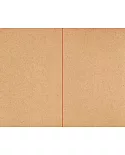In Midstream, photographer Richard Wasserman documents the entire length of the 156-mile Chicago River and gives readers a glimpse into a mostly hidden landscape. As the twentieth
century was drawing to a close and the city's industrial manufacturing era was rapidly waning, Wasserman took note of increased efforts to clean, beautify, and conserve the river, and he felt
an urgent need to preserve the memory of Chicago's brawling past. As the project progressed and the photographer found himself captivated by the river's extraordinarily diverse uses and
visually rich landscape, he grew determined to capture the river in its entirety, in its varying moods and seasons, and from every possible vantage point during a time of rapid
transformation.
����������� Midstream is the culmination of this ten-year project, in which there was always one more location to explore and another moment to capture. The result is a remarkable
record of the Chicago River, revealing the nature of the waterway as it changed throughout the seasons and in relation to the dramatic extremes of Chicago weather. Scenes that had been hidden
by foliage in the summer were unveiled in the winter when the trees shed their leaves. During dry spells when the water level fell, artifacts that were usually submerged became visible and
offered tantalizing hints of the past. Wasserman's experiences along the riverbanks varied by location: in forest preserves he captured images of deer, beaver, and muskrats in the midst of
idyllic flora; in dense urban areas his subjects were nineteenth-century factories and warehouses, many of which have been converted to offices and apartments, standing shoulder to shoulder
with gleaming new office towers and condominium buildings.
����������� With an essay by Julia S. Bachrach, Midstream will be a significant resource and a lasting documentation of the Chicago River during the first decade of the twenty-first
century.





















